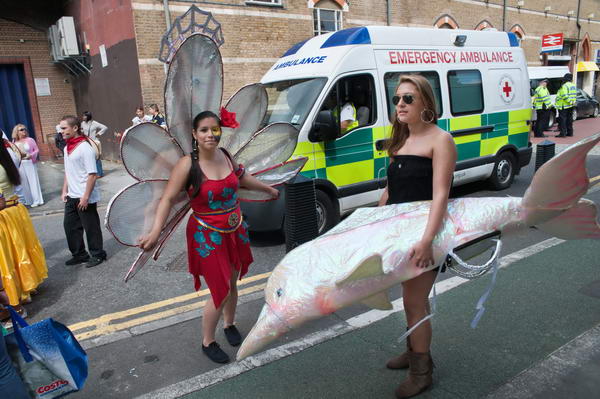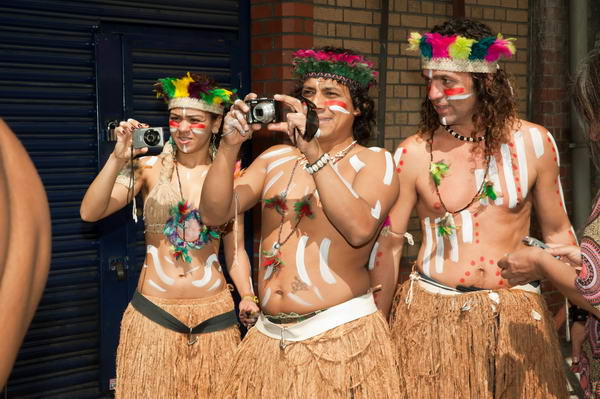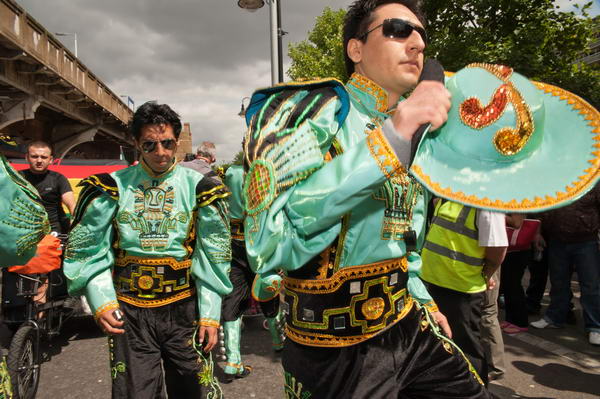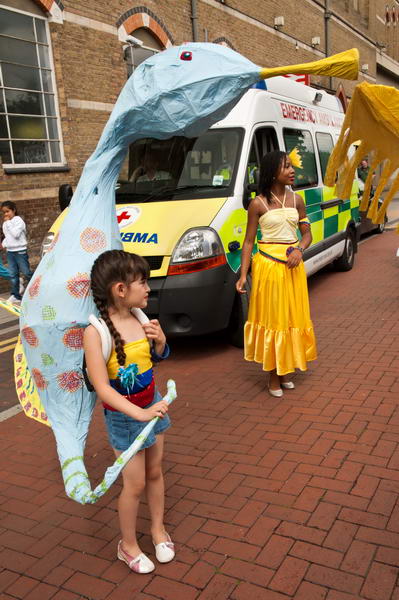There are those who turn up their noses at South London and apparently taxi drivers who refuse to go there late at night – though that’s not a problem I’ve ever had since I virtually never use taxis. But south of the river has many charms and I’ve photographed many parts of it, as well as events such as the Carnaval del Pueblo, described as “the largest Latin American out-door festival in Europe” which began with the support of Southwark Council in 1999.

I’m not sure if the first time I photographed the parade which forms a part of it was in 2004, but certainly this was the first set of pictures from it I put on My London Diary (about halfway down a long page) and in some respects I think it was rather easier then than last Sunday. The big difference is simply the number of photographers. Since 2004 we’ve seen an enormous growth in the ownership of digital cameras, and in particular of amateurs getting digital SLRs capable of professional results.

And once people have got digital cameras, of course they want to go out and use them, and what better opportunity than a festival such as this. Not only are there more photographers, but while film had a restraining influence on the number of pictures that people took – many amateurs might well have thought 36 exposures more than enough for a single event, and for the more serious of us perhaps half a dozen cassettes would have seemed fairly extravagant given the likely return – with digital the marginal cost of an exposure is essentially zero.
Don’t get me wrong. I’m not saying that digital photography is cheap – my annual accounts would immediately prove me wrong. Just that taking more pictures doesn’t add to the costs. It adds a little in the cost of storage – but a one terabyte external hard disk costing around £70 will hold perhaps 80,000 of my RAW images – under 1p per image. And probably more importantly it each adds a few seconds to the time I take to go through a set of images and select the relatively small proportion that I will take further. But once you’ve got the gear, then photography becomes more or less free.
The event has also gained a higher profile and the festival in particular has grown, although the procession – despite some lottery funding – doesn’t seem to be much different. Perhaps it does now have a little less of a ‘grass-roots’ feel to it than it did in the early years, but this doesn’t yet appear as an event that seems to have been commercialised and organised out of existence like some others. It is still an event where anyone can turn up and take pictures, and I think probably the kind of thing that is listed as a ‘photo-opportunity’ in Amateur Magazines. Hence the swarm of photographers, and the problems that brings for both other photographers and those taking part in the event.

In general working with a crowd of amateurs is harder than working with pros, who tend to be rather more aware of what they are doing and less likely to walk in front of other photographers etc. And I’m sure that my way of photographing things – using my feet to get in what I think is the right place to take pictures whenever I can – infuriates many of those who like to stand well back and press the button from a distance.

Of course these other guys have just the same rights to be there and take pictures as I do, and I wouldn’t want that generally restricted, though there are times when I think a press card should get you places that others can’t go. But perhaps I might find other things to do another year.
More about the event and more pictures on My London Diary.